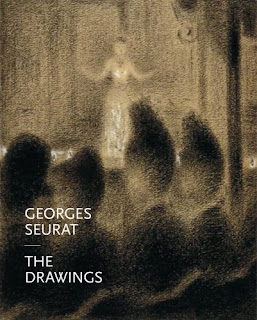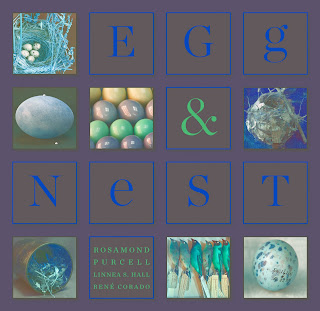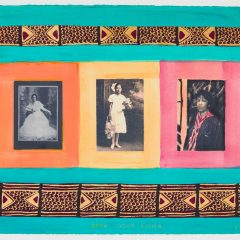Three especially beautiful volumes are sitting on my desk at the moment, all of which would make perfect holiday gifts for an artist or art lover. Two are exhibition catalogs which have interest well beyond their respective exhibitions; the third, a wild card, is an unusual science book from Harvard University Press.
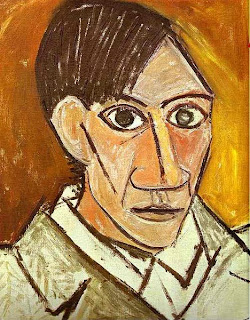
Pablo Picasso, Self-Portrait (1907), oil on canvas, 19 3/4 x 18 in., Narodni Gallery, Prague. This painting is the subject of an article by Leo Steinberg, published for the first time in Cubist Picasso.
Cubist Picasso (Paris: Editions de la Réunion des Musées Nationaux and Flammarion, SA, 2007 English edition, published simultaneously in French) ISBN 978-2-08-0300048-52
This handsome volume accompanied an exhibition at the Musée National Picasso, Paris commemorating the centenary of Les Demoiselles d’Avignon. It includes paintings, drawings, collages, sculpture and reliefs which Picasso created between 1906-1925; it does not include the Demoiselles itself, which was the subject of a monographic exhibition at the museum in 1987, nor does it include Picasso’s cubist prints or designs for the ballet. The majority of the work comes from the Musée Picasso (and hence from the artist’s estate) and includes rarely-seen three-dimensional pieces as well as provisional work such as paper cut-outs used as studies, or possibly intended to be used in collages.
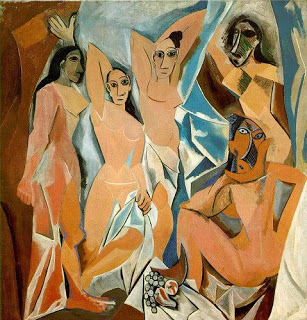
The book is splendidly illustrated and the images alone make it valuable. Not only are there 400 color plates and a number of early photographs of the artist’s studio, but the various chapters are preceded by more than a dozen full-page, enlarged details. Details of modernist works are rarely published and, unidentified though they are, these give readers a better idea of the surface qualities of Picasso’s work than anything else in print. We can see crinkles and folds in paper, the three-dimensionality of a collage held together with a pin, the way charcoal skips over the textured surfaces of laid papers, varied paint handling and texture achieved by bits of dried paint and, in one case, glass beads embedded in thick paint.
Cubist Picasso includes essays by two generations of scholars: Anne Baldessari, Pierre Daix, Pepe Karmel, Irving Lavin, Jean-Claude Lebensztejn and Leo Steinberg (who contributed three articles, two unpublished and one a valuable re-print of his 1978 article on Picasso’s Three Women), a chronology of cubism and a bibliography.
Georges Seurat; The drawings (The Museum of Modern Art, New York, 2007) ISBN 978-0-87070-717-9
Georges Seurat is one of the great draughtsmen of the 19th Century, remarkable for developing a method of drawing that rejected contour lines and for the impact he made in a career lasting only eleven years (he died at thirty-one). The exhibition at MoMA included almost half the drawings of his maturity and a number of notebooks and small oil sketches on wood; the catalog presents them with great sensitivity and clarity. All are reproduced in color, emphasizing the tone of his papers and the subtle contrast between the paper, conté crayon and occasional highlights in white gouache or chalk.
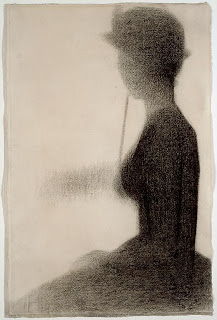
Georges Seurat Seated Woman with Parasol (1884-5), conté crayon on paper, 18 3/4 x 12 3/8 in., The Art Institute of Chicago.
Seurat drew on the entirety of his paper which was usually a quarter sheet, with deckled edges on two sides, and most of the illustrations include these ragged edges. The book’s subtle design by COMA (Amsterdam and New York) emphasizes the artist’s use of these uneven edges by left-adjusting the type and leaving the right margins uneven and by using untrimmed paper which calls attention to the right edge of each page. Sequences of notebook spreads used as end papers is another design element that brings out the artist’s work and allows for a significant number of the notebook sketches to be illustrated.
The catalog includes an excellent range of essays: scholars Hubert Damish and Richard Shift analyze the ideas Seurat explored with drawing and the place of drawing in his work while Richard Thomson and curator Jodi Hauptman address the subjects he found in the streets and entertainments of Paris. Artist Briget Riley discusses the importance Seurat’s drawings had for her and paper conservator Karl Buchberg looks at his materials and technique.
Rosamond Purcell, Linnea S. Hall and René Corado Egg and Nest (Cambridge, The Belknap Press of Harvard University Press, 2008)
Harvard University Press doesn’t publish books on art, but this science volume is art in all but name. Photographer Rosamond Purcell photographed the bird egg and nest collection of the Western Foundation of Vertebrate Zoology, creating an homage to one of nature’s most perfect forms in all its varieties and a celebration of birds as ingenious builders and basket-makers. The term oology was new to me, but the collecting of bird’s eggs was a pursuit of Victorian amateurs that has yielded valuable data for modern scientists.
Purcell lovingly explores the range of size, shape, color and markings of the eggs, photographing them singly and in groups to create subtle images of stunning beauty. And the nests! I had no idea of the variety of shape and the resourcefulness of birds who weave plant fibers, stitch leaves together, pack horsehair with mud, hollow out cactus stems and recycle lace, newspaper, audiotape, plastic Easter basket grass, fireworks and other man-made debris, and occasionally their own droppings. They hollow out gourds and take advantage of cavities in discarded cans, pots, lanterns and knotted marine ropes.
The book includes an article on the biology of birds’ eggs and nests, their scientific uses, and the history and range of collections of the Western Foundation of Vertebrate Zoology by its director and collections manager. Purcell discusses the process of photographing the collection and meanders through various associations of birds and people; at one point she illustrates a sketchy ink drawing by Francis Bacon beside a detail of the remarkably similar markings of a Common Murre egg.
The book can be appreciated for the range of information it contains (each of the photo captions elaborates on its subject) or enjoyed for the wealth of visual variety and beauty it finds in one small area of the natural world. This elegantly designed and beautifully printed book should be of interest to nature and art lovers.


